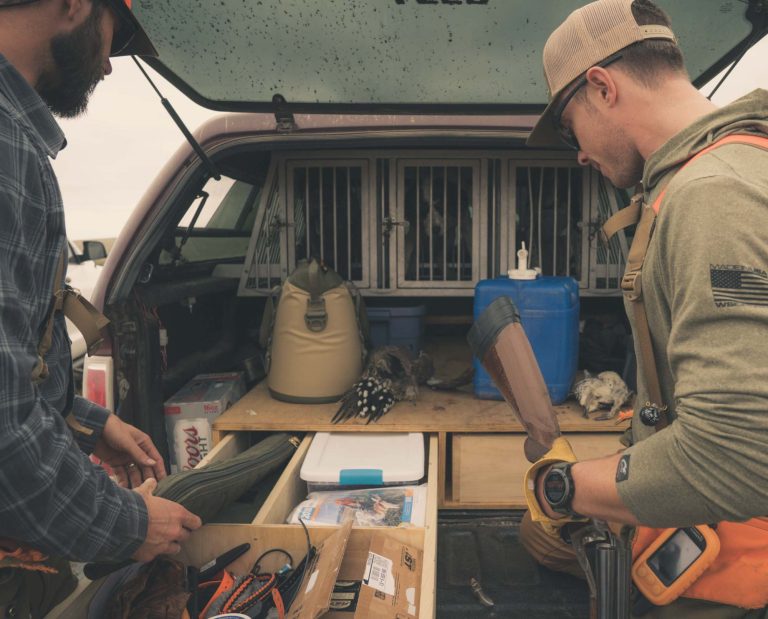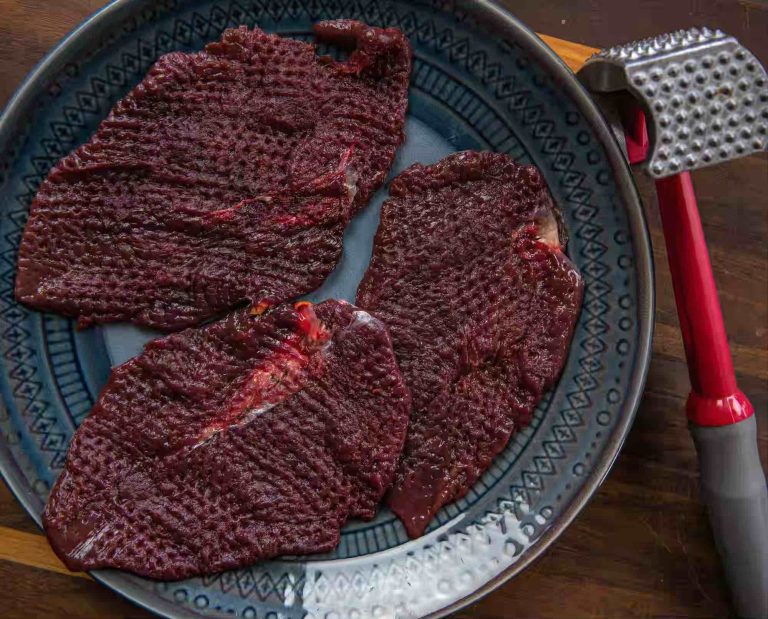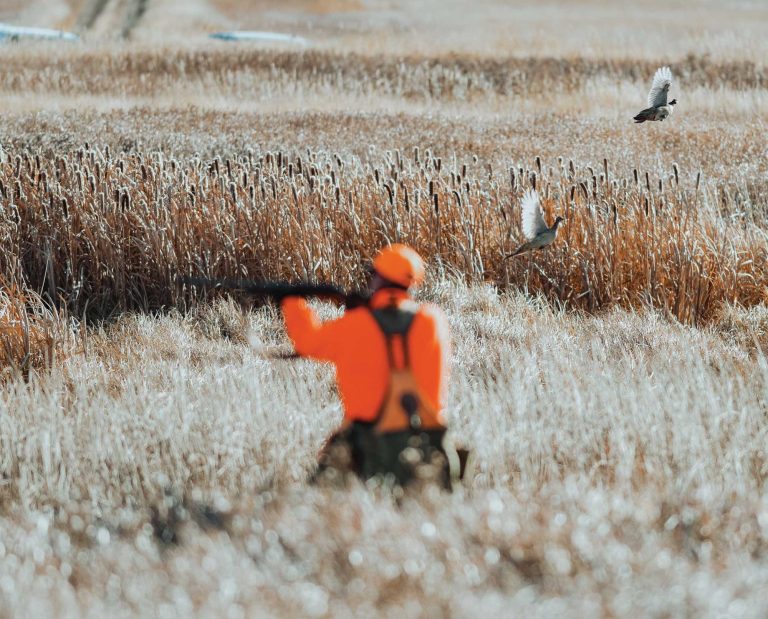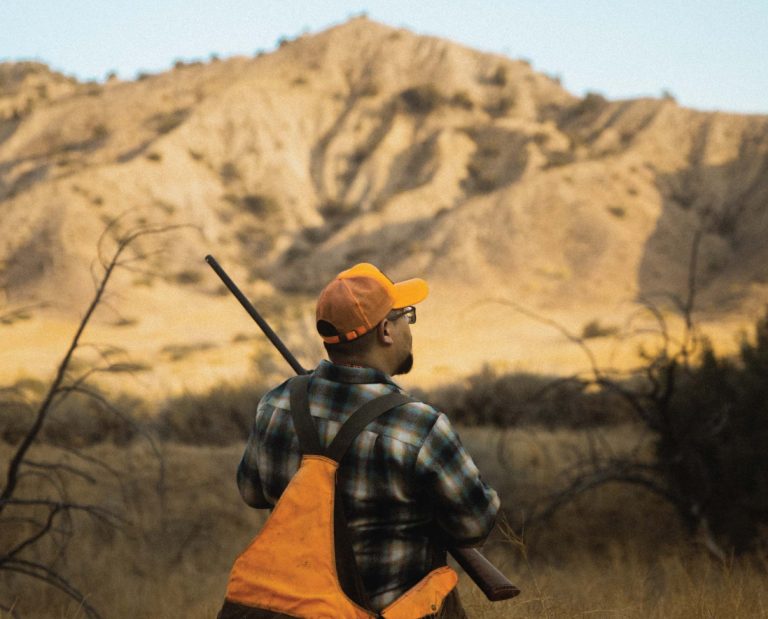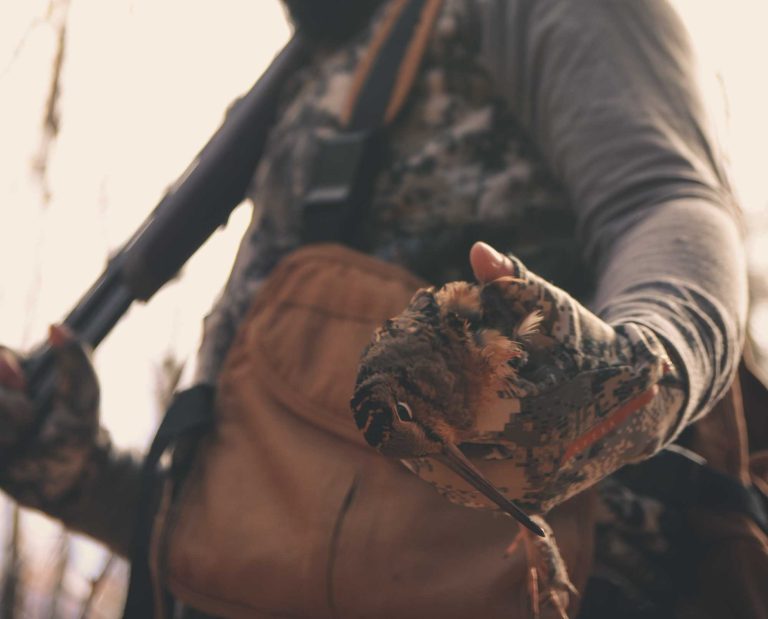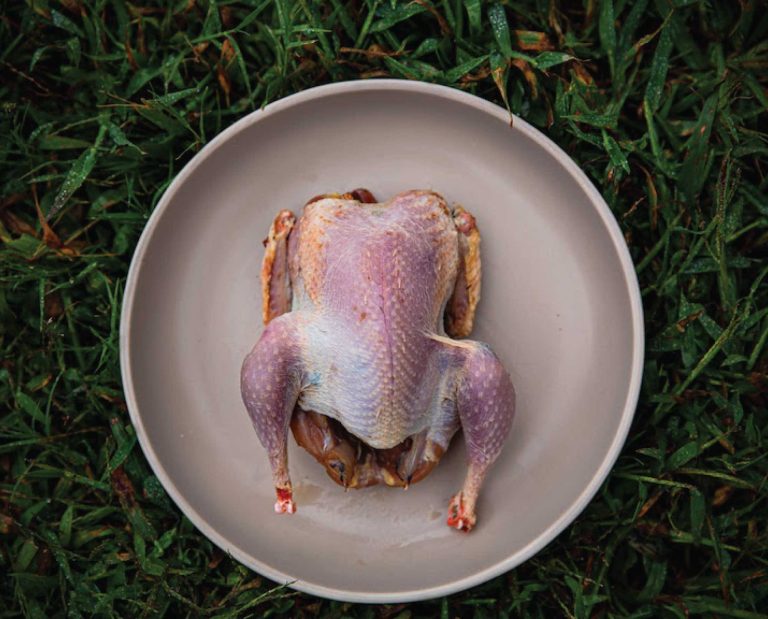An Introduction to Foraging for Mushrooms
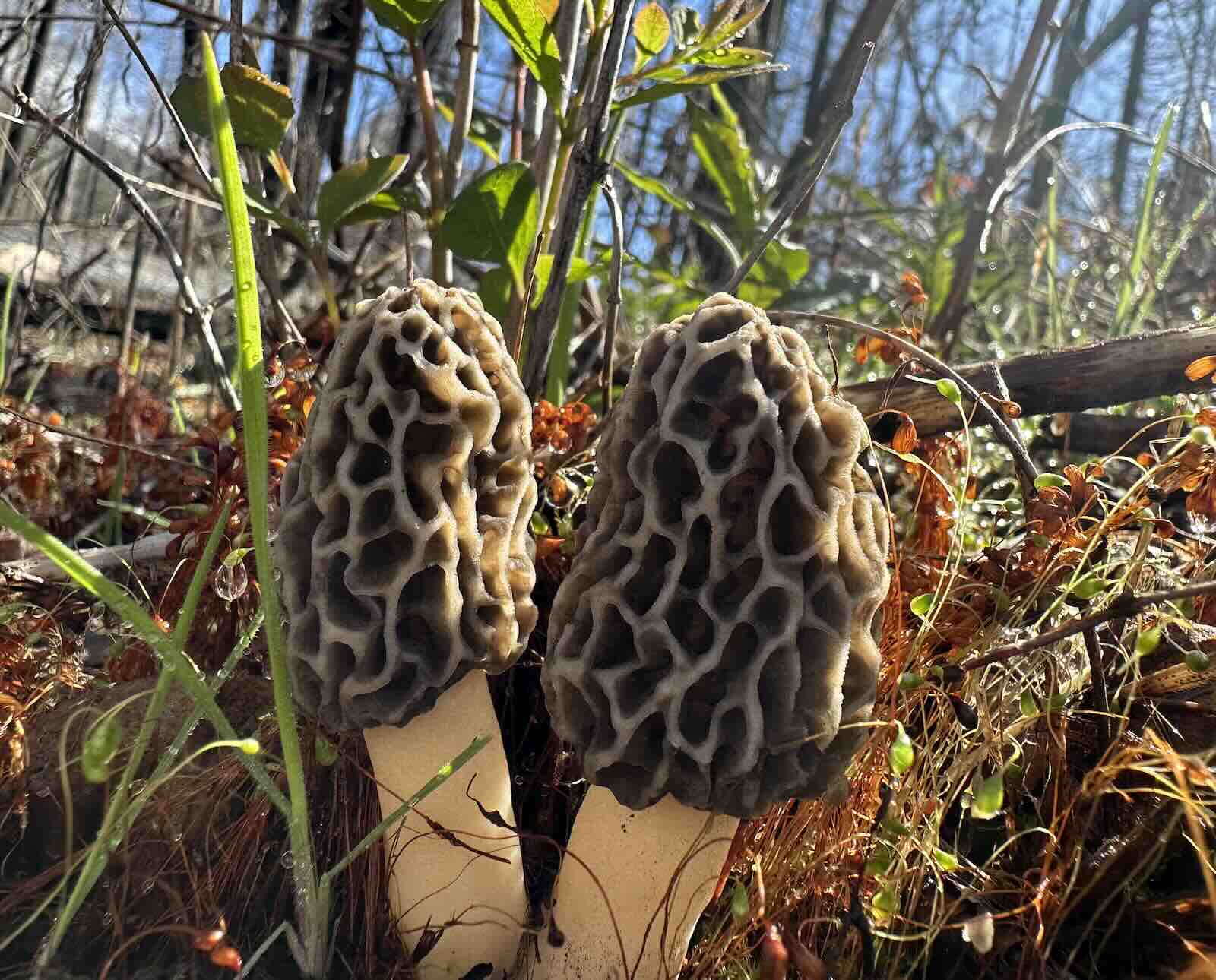
Mushrooms don’t have to be intimidating — with some basic preparation, you can forage safely and enjoy a new activity
So many of us grew up hearing from our elders that mushrooms are dangerous and should be left alone. My own Coloradan grandma always told us, “Don’t touch any mushrooms unless you know what they are.” She was right, but over the years, I’ve learned that you do not need to be an expert to learn to forage for mushrooms safely. If you are careful, use an identification book or two, and check with the experts to learn your identifying characteristics, you can forage mushrooms. All you need is a little confidence and curiosity.
Why Forage For Mushrooms?
Mushrooms offer climate change solutions. It is estimated that humans have discovered only three to eight percent of fungal species on the planet, many of which can break down and remediate oil spills and plastic waste. Others can feed and attract insects with their smells and bright colors – these insects, in turn, pollinate flowers and nurture forests. A recent study has shown that “mycorrhizal fungi are responsible for holding up to 36 percent of yearly global fossil fuel emissions below ground – more than China emits yearly.” If we were to further our enthusiasm and research in the fungal world, imagine what else we might unearth to help our planet. When we recognize the importance of fungi in nature, we gain a greater appreciation for them as a resource.
Mushrooms also have many health benefits. Not only do mushrooms typically contain an incredible amount of protein and vitamins, but they can also boost the immune system, reduce blood pressure, improve gut health, improve cognitive function, lower blood sugar, improve sleep, boost energy, improve lung function, fight cancer, and alleviate anxiety and depression. Agarikon, a polypore fungus that thrives in old-growth forests, has antioxidant, antimicrobial, anti-inflammatory, and antibiotic properties.
In addition to being a healthy food source, foraging for mushrooms encourages outdoor friends and family time. We live in a time where screen time has replaced high-quality, in-person human interactions, and our primary space is indoors. Studies have been conducted on the positive psychological effects of spending time under the trees, or “forest bathing.” I firmly believe that involving kids in outdoor activities from a young age is good for family and child development. Under-the-trees activities, including hunting for wild mushrooms, teach kids to genuinely appreciate our forests, nature, and the impact that our footsteps can make.
The biggest reason why you should forage for mushrooms is because they’re delicious. But you probably already know this.
How to Begin Looking For Mushrooms
Learning how to forage for mushrooms can be very intimidating due to the risks of misidentifying a species. Resources like identification books, pocket guides, and mycology clubs will help you get your foot in the door and provide accurate information so you know precisely which mushroom you’re picking.
Regarding identification guides, get a well-recommended ID book or two. Keep one in your mushroom bag to take into the field, and stash a more comprehensive guide in your car or at home. Remember that I shop for guides relevant to the local areas I forage in, which, in this case, is the Pacific Northwest (PNW).
Pocket guides that are great for storing in your bag or backpack include All the Rain Promises & More by David Arora and Mushrooms of the Northwest by Teresa Marrone and Drew Parker. Large, comprehensive guides I live by include Mushrooms of the Redwood Coast by Christian Schwarz and Noah Siegel, Mushrooms Demystified by David Arora, and Mushrooms of British Columbia by Andy MacKinnon and Kem Luther.
After you’ve acquired some ID guides, join a local mycology association. Becoming a group member allows you to participate in local forays, learn from experts, bring in samples, and attend meetings covering crucial information about foraging locally. A few local groups to look at in the PNW are:
- Oregon Mycological Society
- Willamette Valley Mushroom Society
- Cascade Mycological Society
Join social media groups online to complement your in-person time in mycology clubs. In my experience, mushroom enthusiast group members love sharing their knowledge and expertise with new foragers. Post photos of a mushroom you are trying to identify, and you will get some good help. Some solid Facebook groups I participate in include:
- PNW Mushroom Foraging and Identification
- Mushroom Pickers of the Pacific Northwest
- PNW Women’s Wild Foraging and Bushcraft Connection
One of the things I learned early on was to bring two mushroom collection bags. One is for your edible mushrooms, and the other is for holding a couple of mushrooms you want to identify. Harvesting unknown mushrooms is how we become better identifiers, so don’t be afraid to pick mushrooms you aren’t familiar with. Just be sure not to eat them!
Lastly, get out and cover ground. Just like a great hunter isn’t going to spill their favorite hunting spot secrets to anyone, experienced foragers will not simply tell you where to go to fill up a bag with edible mushrooms. Why? Finding great mushroom foraging grounds requires lots of research and trial and error. Sometimes, foragers come up empty-handed for years. Get out when the rain begins after summer and head into your local forested parks, preferably up to the mountains or the coast. Explore dirt and gravel roads and cover some serious ground. This is the best way to learn how to forage for mushrooms.
What To Bring When Foraging for Mushrooms
When foraging in the woods, safety always comes first. Every year in Oregon, hikers and outdoor enthusiasts go missing. Some remain unfound. Bring a physical topographical map and download a GPS app on your phone. I like Gaia and have also used OnX Hunt. Before leaving for a forage, notify a friend or relative of your general destination and when you plan to return. I also strongly recommend bringing a buddy with you. Lastly, remember that mushroom hunters are not the only hunters in the forest. Be sure to verify your area’s open hunting seasons and wear bright colors if necessary.
Mushroom Foraging Equipment
- Backpack
- Large mushroom bag or basket, plus another small mesh ID bag
- Knives/brushes (for dirt and debris removal)
- Identification book(s)
- Bear spray (and mace)
- Topo map and phone with GPS app
- Power bank for your phone
- Water, emergency snacks, flashlight, rain gear, and an extra layer of clothing
- First aid kit
- Walkie-talkies if you’re with others
- Candy. It’s invaluable when used as a mushroom-finding bribe if you’re with kids (or with adults who need extra incentives)
If you’re interested in foraging for mushrooms, check to see if where you’re going requires a permit. Certain public lands require permits for mushroom foraging. Mt. Hood National Forest, for example, requires a special permit if you plan on harvesting more than a gallon of wild mushrooms in a day per person or 10 gallons per year. A bit of due diligence can preempt a lot of embarrassment or even a fine.
Where and When to Look for Mushrooms
When looking for mushroom habitat, look for microclimates. These are areas where conditions can differ from the larger surrounding physical environment. Microclimates hold pockets of edible mushrooms that can seemingly erupt out of nowhere when conditions are right. You’ll find that these little microclimates can really affect the way mushrooms fruit. In Oregon, there are a variety of microclimates, given the wide variety of habitat types that exist here.
Spring and fall are the most prolific seasons for mushroom growth. Different mushroom types have their seasons, but typically, they all need a bit of moisture and warmth. When it gets too hot or cold, mushrooms will not fruit, just like flowers. That said, mushroom foraging can be done almost all year round – which is good because it becomes addicting.
Common Edible Mushrooms
With 120,000 species of identified mushrooms, we don’t have time to learn them all! Let’s look at the six most common edible mushroom species in my neck of the woods, Oregon, and throughout the West.
Cantharellus (chanterelle)
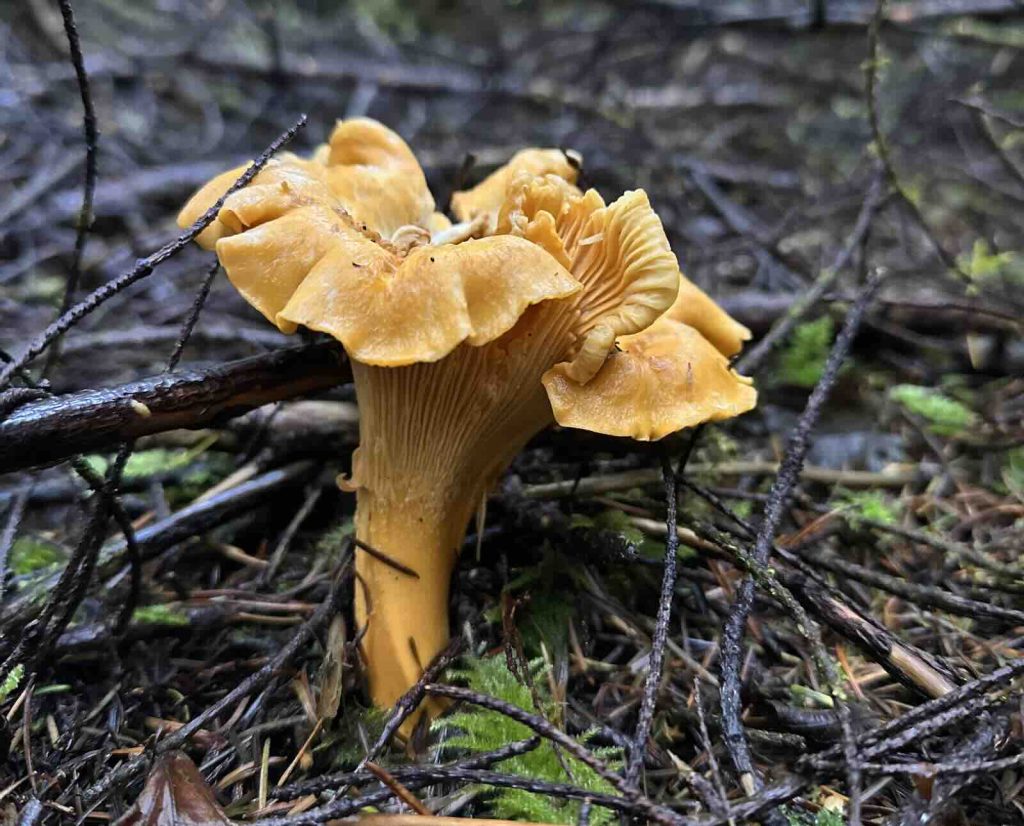
The phrase “follow the yellow brick road” is often used in my family when we find one of these because they often cascade down a hillside or trail in a line. Chanterelles begin fruiting in late summer and usually last until the first significant freeze.
Boletus (bolete)
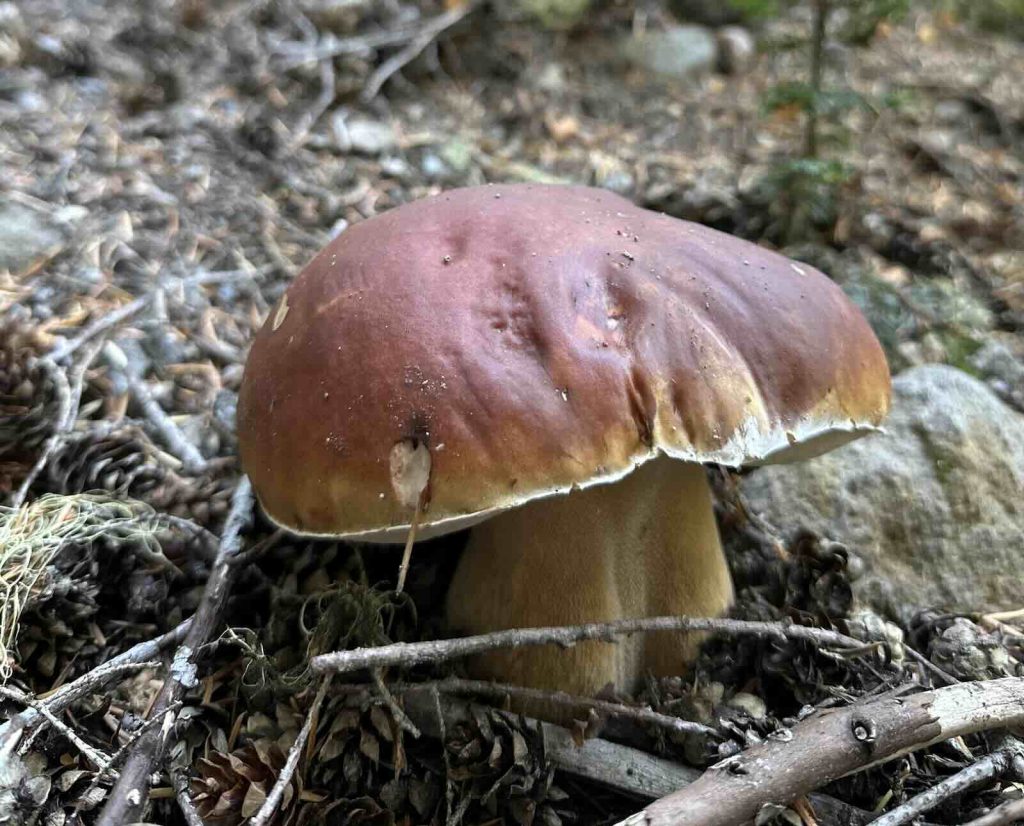
These are my absolute favorite to find because of their size; they can grow to be several pounds and as large as a globe! Boletes usually fruit beginning in May and continue fruiting into November or until temperatures drop below freezing.
Morchella (morel)
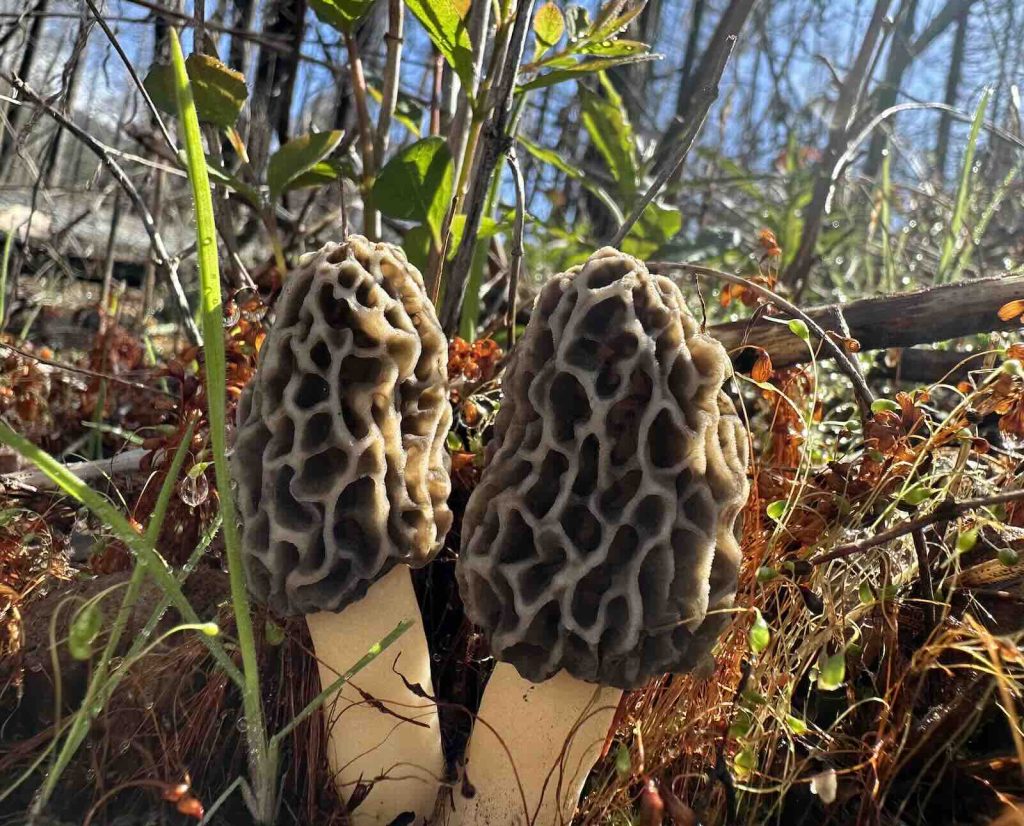
My dad and stepmom always say morels “grow where they grow,” which I believe now after returning from many spring trips to the woods with an empty basket. This can be the trickiest mushroom of all, but also the one people are most interested in learning about. Morels fruit as early as March and as late as August, but the bulk of these are found in May and June, depending on moisture and elevation.
Pleurotus (oyster)
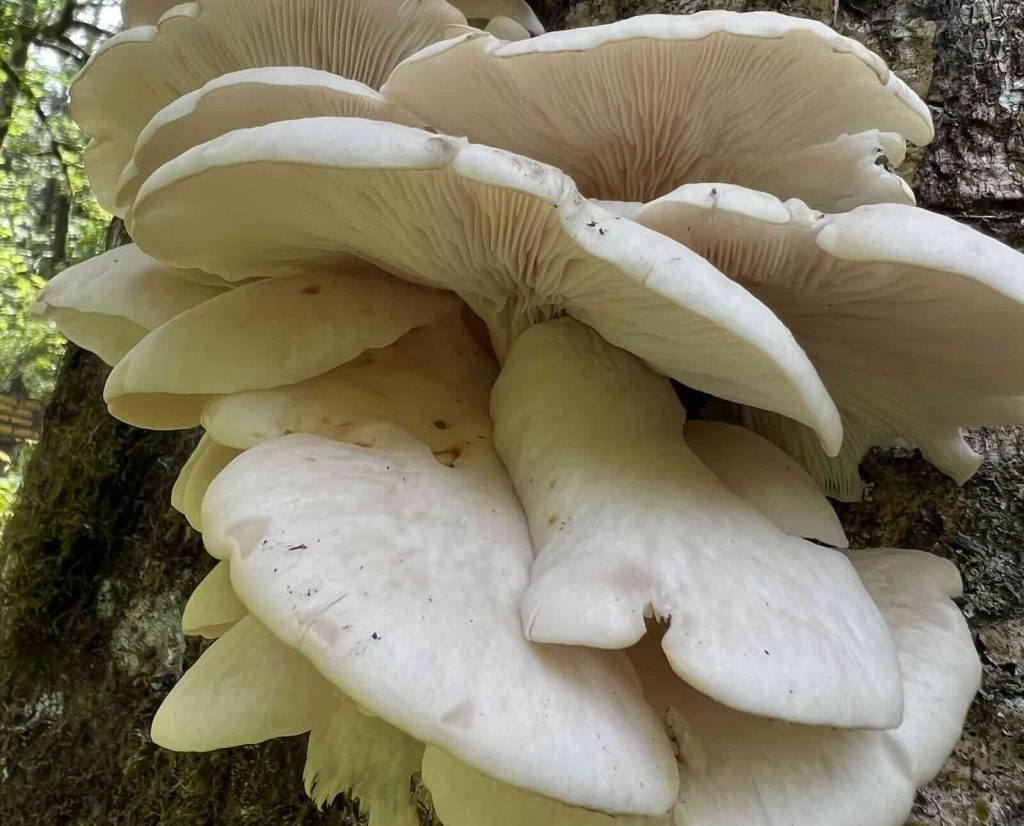
Oysters are shelf-looking, thin mushrooms that grow out of decaying wood. They fruit in clusters from early spring through summer and into fall. After a rain, oysters can grow by twice their size daily.
Hericium (comb tooth, lion’s mane, bear’s head, etc.)

Hericium species generally resemble white to cream-colored “waterfall-like” clusters of spikes cascading down vertically, sometimes with branches shooting off in multiple directions. They are typically late summer to late fall mushrooms here in Oregon, depending on our crazy weather. Hericium species grow on decaying wood and never in the ground.
Hydnum (hedgehog)
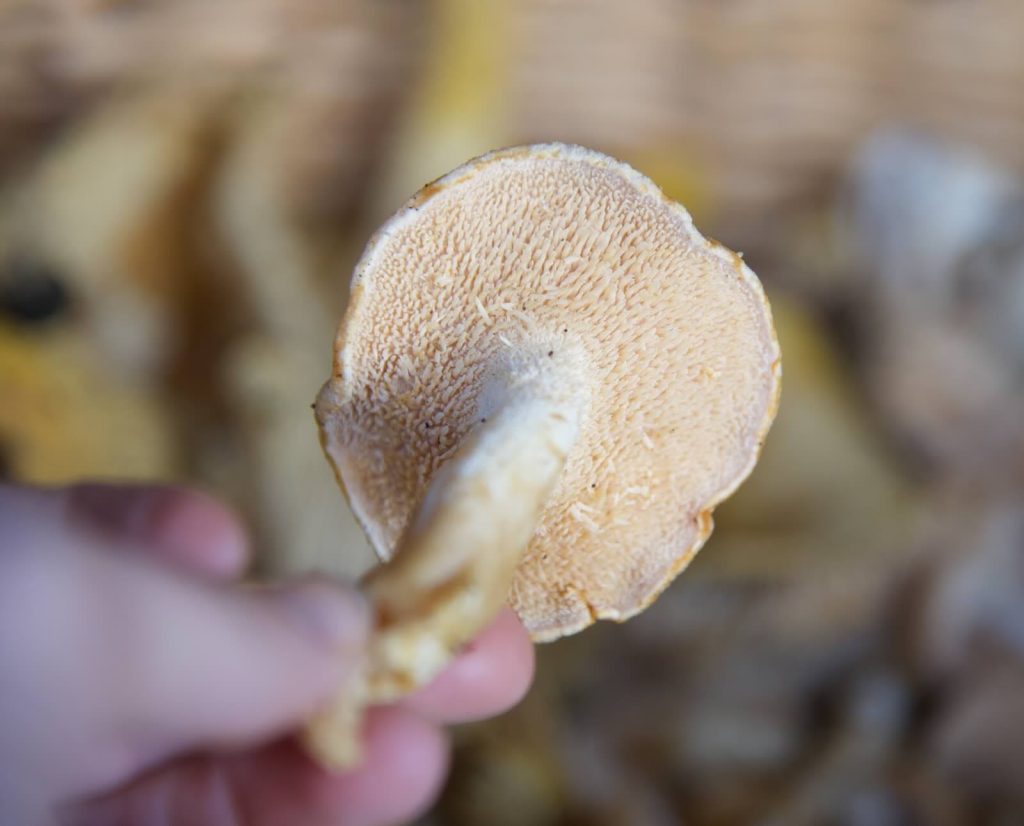
This cold-weather fruiting mushroom grows near both the Coast Range and the Cascades. The hedgehog has little and fragile spines underneath the cap, ranging in color from white to orange.
Plucking Versus Cutting Mushrooms
Plucking or picking mushrooms versus cutting mushrooms is very subjective. This is a commonly argued question and possibly one of the touchiest subjects among mushroom foragers, commercial pickers, and amateurs alike. I am not going to weigh in on this. Still, I can tell you that most mycologists and professional mushroom foragers say that it does not matter either way and that neither method will typically inhibit the future growth of the mycelium, which is the underground “root” or growth system of the mushroom.
You are more capable than you think, and there is no need to be afraid of mushrooms. Hit the “bush” (as I like to call it), explore, look down, go slow, look around, and take samples home to research. The more you go out to the forest, the more addicting this activity becomes and the more you’ll know about your favorite forests and wildlands.



